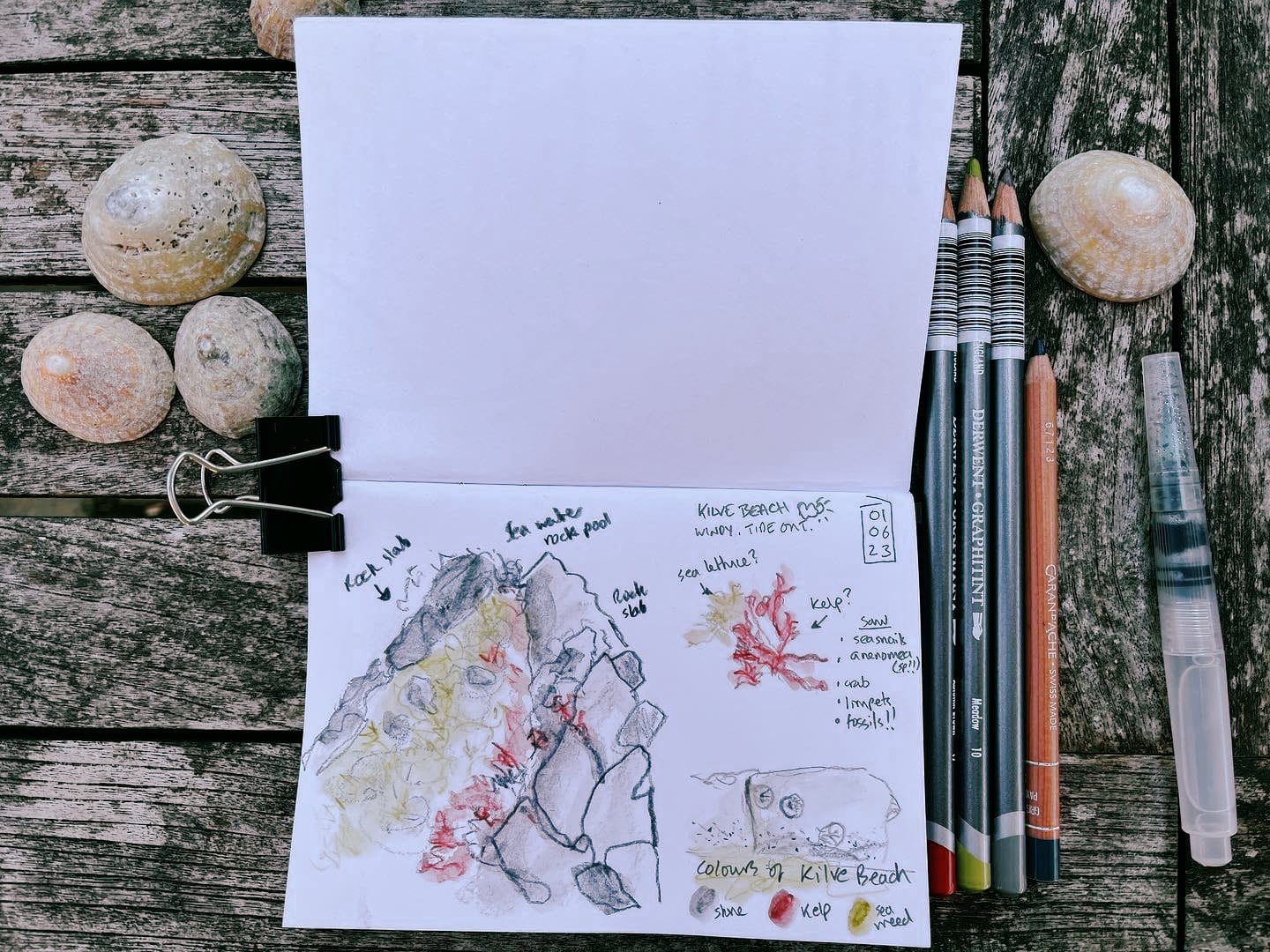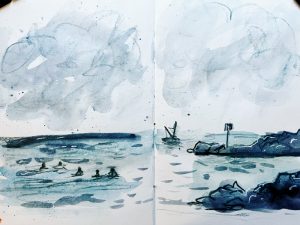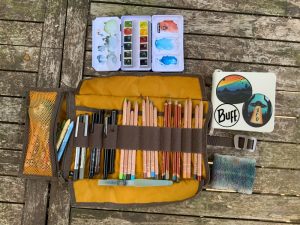In this fast-paced world dominated by screens and technology, taking the time to connect with nature has become increasingly important for our well-being. A wonderful way to foster this connection is through the art of nature journaling.
What is a Nature Journal?
A nature journal serves as a personal record of your observations, thoughts, and experiences with the natural world. Whether you’re an avid artist or a budding writer, starting a nature journal can be a transformative journey. In this blog post, we will guide you through the process of starting your own nature journal.
6 Tips to Get Started in Your Nature Journal
- Choose Your Tools:
The first step in starting a nature journal is selecting the right tools. All you really need to start nature journaling is a pencil or pen, a piece of paper, and your curiosity! However, while there is no hard and fast rule, here are some essentials to consider:
a) Journal/Sketchbook: Opt for a journal with blank pages, and a weight of at least 130gsm to allow for some wet media to give yourself creative freedom. Choose one that is small enough to carry with you on your outdoor adventures.
b) Pens and Pencils: Include a variety of pens with different ink colours and thicknesses. Pack a few pencils for sketching and shading. Colour pencils can be a great addition for adding quick colour – even better would be a small selection of watercolour pencils!
c) Watercolours: Speaking of watercolours, consider adding a portable watercolour set and a small brush or water brush to your kit. This will allow you to add vibrant colours to your journal.
d) Field Guide: Carry a field guide relevant to your local flora and fauna. It will help you identify and learn more about the natural wonders you encounter. There are also some wonderful phone apps to help you discover what plants you are looking at, or to help identify birdsong.
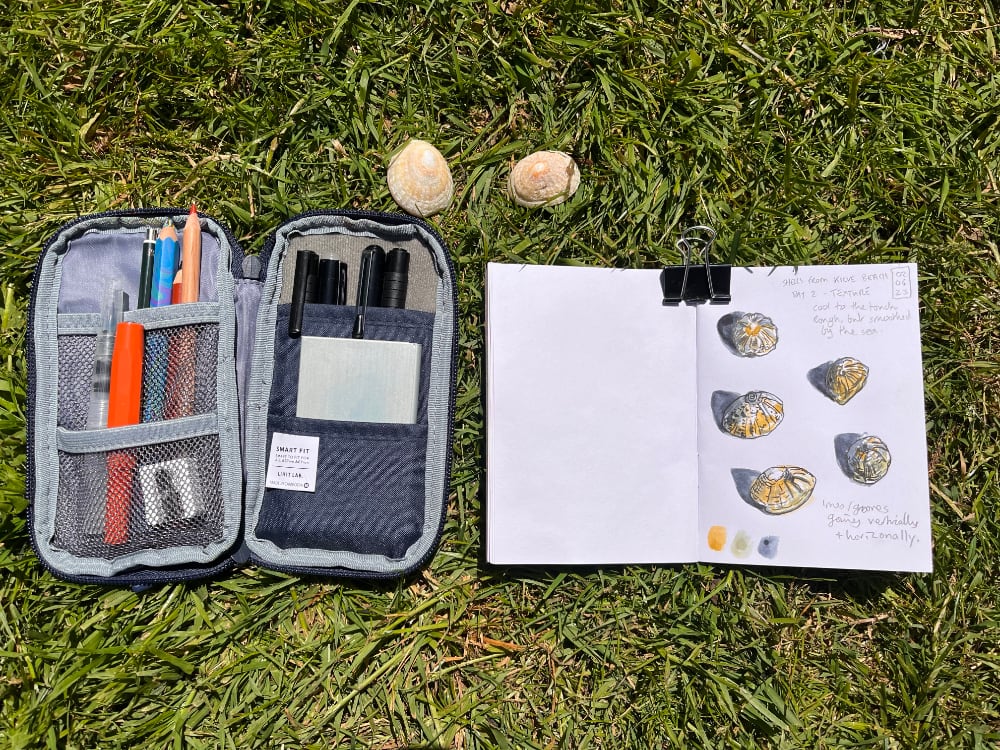
2. Set Your Intentions:
Before diving into your nature journal, take a moment to reflect on why you want to start this practice. What are your goals and intentions? Are you seeking relaxation, knowledge, creativity, or all of the above? Setting your intentions will help you stay focused and motivated throughout the journaling process.
3. Observe with Mindfulness and Careful Attention:
When you venture into nature, be fully present and observe your surroundings with mindfulness. Engage all your senses, paying attention to the sights, sounds, smells, and textures. Note the intricate details and the overall ambiance of your environment. As you explore, allow your curiosity to guide your observations.
4. Document Your Discoveries:
Nature journaling can be done anywhere – observing the plants or pets in your home, looking out of the window at the changing sky, the trees in your area, or documenting life in your garden. It doesn’t have to be out in the wilderness or in exotic locations! Once you’ve found a suitable spot or come across something that catches your attention, it’s time to document your discoveries. There are various ways to approach this:
a) Sketching: Capture plants, animals, landscapes, or anything that captivates you through drawing. Remember, your sketches need not be perfect. Focus on representing the essence of what you see.
b) Writing: Sometimes we need more than just a drawing to record what we are discovering in our nature journal. Use words to describe the scene, your emotions, and any interesting facts. I always include some metadata on my nature journal pages – record the date, weather, temperature, your location. Write about the colours, textures, patterns, and the overall atmosphere. Be vivid and descriptive to bring your experiences to life on the page.
c) Collecting Samples: Consider pressing flowers, leaves, or other natural elements you find. Attach them to your journal pages using glue or washi tape, preserving them for future reference.
d) Photography: If you’re more inclined towards photography, take pictures of the captivating scenes or intriguing subjects. Print and include them in your journal, or if you are with other people, and stopping to sketch is not possible – you can use them as references for sketches when you get back home.
Your nature journal can combine these approaches – making it a wonderful and varied way to capture your experiences in nature.
5. Reflect and Learn:
A nature journal is not just a visual record; it is also a space for personal reflection. After each entry, take time to reflect on your experiences and what you’ve learned. Consider the connections you’ve made with nature and how it has impacted your well-being. Reflecting on your journal entries will deepen your understanding and appreciation of the natural world.
6. Develop a Routine:
Make nature journaling a regular part of your life by developing a routine. Set aside dedicated time, whether it’s a weekly excursion or a few moments in your garden, or local park each day, to immerse yourself in nature and record your observations. Consistency will help you build your creative habit and improve your observational and drawing skills.
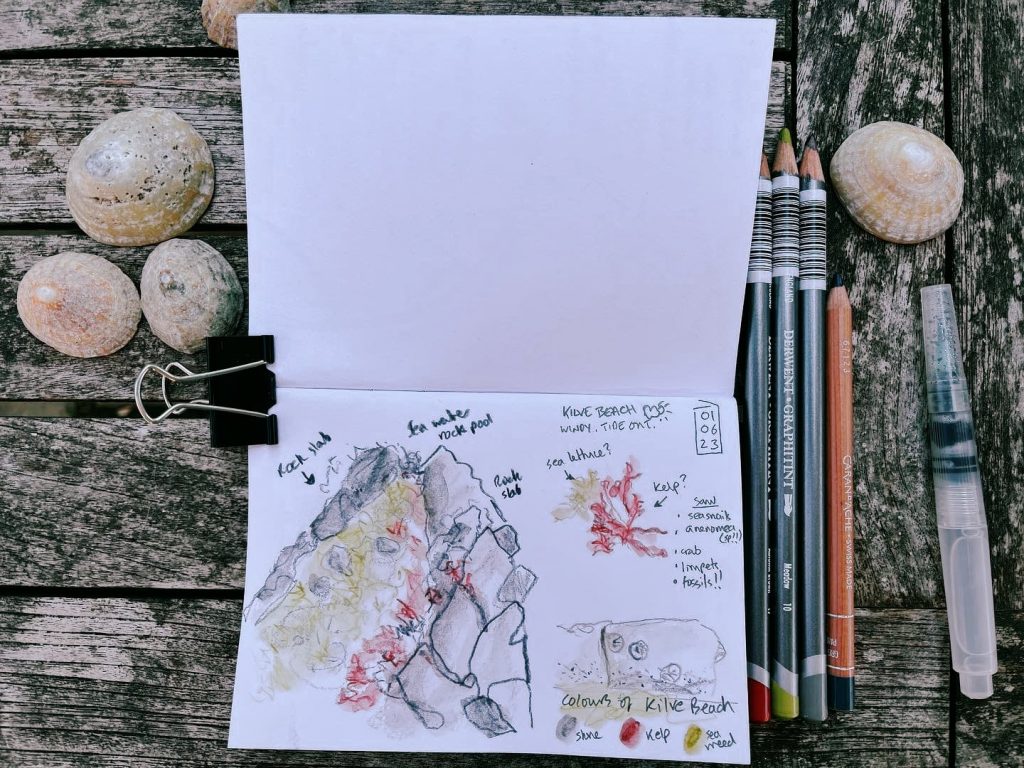
In Summary:
Starting a nature journal is an invitation to embark on a journey of self-discovery, creativity, and connection with the natural world. It allows us to slow down, observe beauty around us, and appreciate intricate details that often go unnoticed in our busy lives. Through sketches, writing, collected samples, or even photographs, we create a personal record of our experiences.
As you begin your own nature journal, remember to choose the tools that resonate with you, set your intentions, and approach your observations with curiosity. Nature journaling is not a onetime activity but a practice that evolves over time. In this digital age, starting a nature journal provides a much-needed balance, grounding us in the natural world and reminding us of the beauty that surrounds us. So, grab your sketchbook, step outside, and embark on this rewarding journey of self-discovery and connection with the beauty of nature.
